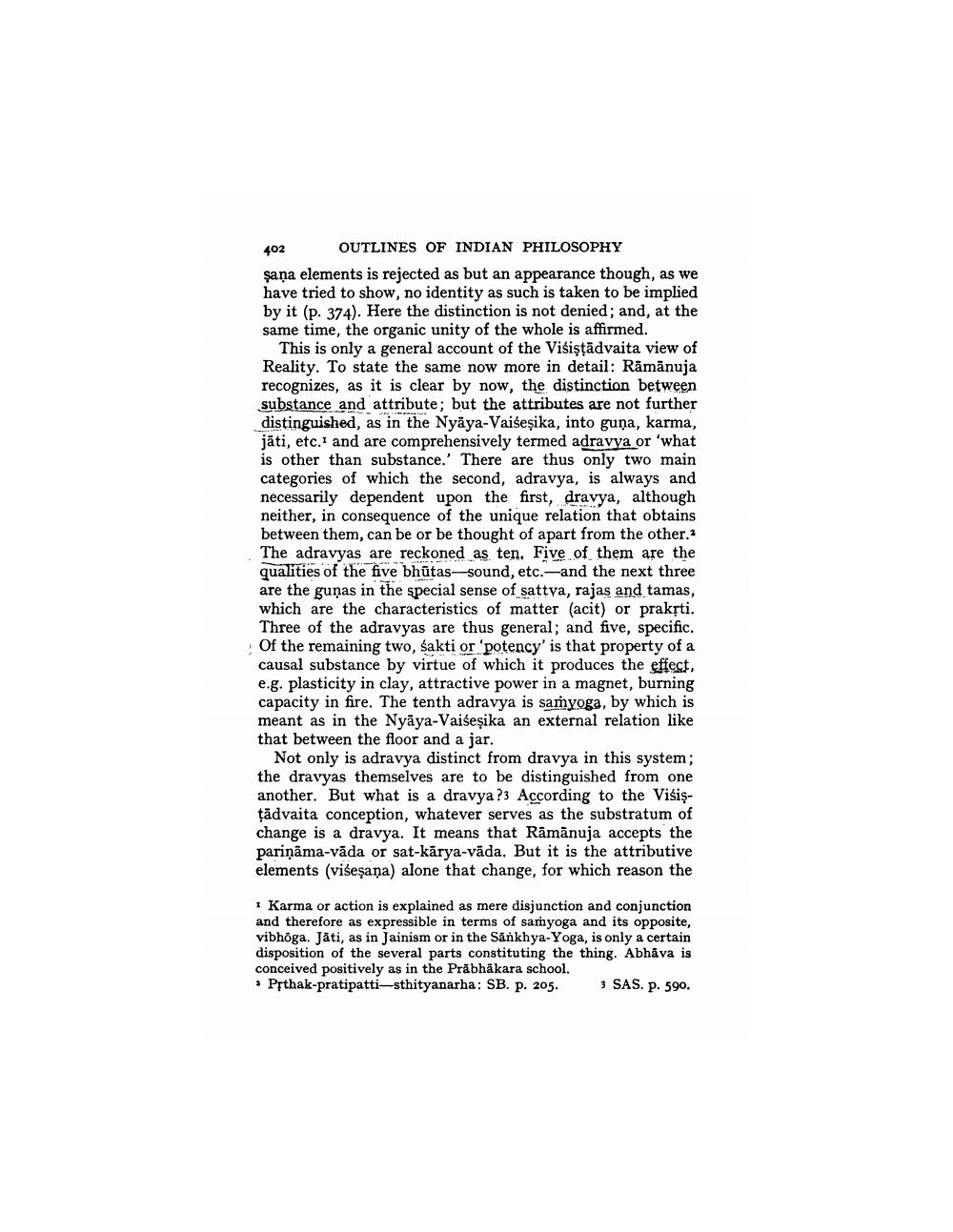________________
402
OUTLINES OF INDIAN PHILOSOPHY saņa elements is rejected as but an appearance though, as we have tried to show, no identity as such is taken to be implied by it (p. 374). Here the distinction is not denied; and, at the same time, the organic unity of the whole is affirmed.
This is only a general account of the Visiştādvaita view of Reality. To state the same now more in detail: Rāmānuja recognizes, as it is clear by now, the distinction between substance and attribute; but the attributes are not further distinguished, as in the Nyāya-Vaišeşika, into guņa, karma, jäti, etc. and are comprehensively termed adravya or 'what is other than substance.' There are thus only two main categories of which the second, adravya, is always and necessarily dependent upon the first, dravya, although neither, in consequence of the unique relation that obtains between them, can be or be thought of apart from the other.2 The adravyas are reckoned as ten. Five of them are the qualities of the five bhūtas-sound, etc.--and the next three are the guņas in the special sense of sattva, rajas and tamas, which are the characteristics of matter (acit) or praksti. Three of the adravyas are thus general; and five, specific. Of the remaining two, sakti or 'potency' is that property of a causal substance by virtue of which it produces the effect, e.g. plasticity in clay, attractive power in a magnet, burning capacity in fire. The tenth adravya is samyoga, by which is meant as in the Nyāya-Vaiśeşika an external relation like that between the floor and a jar.
Not only is adravya distinct from dravya in this system; the dravyas themselves are to be distinguished from one another. But what is a dravya ?3 According to the Visiştādvaita conception, whatever serves as the substratum of change is a dravya. It means that Rāmānuja accepts the parināma-vāda or sat-kārya-vāda. But it is the attributive elements (višeşana) alone that change, for which reason the
1 Karma or action is explained as mere disjunction and conjunction and therefore as expressible in terms of samyoga and its opposite, vibhoga. Jāti, as in Jainism or in the Sankhya-Yoga, is only a certain disposition of the several parts constituting the thing. Abhāva is conceived positively as in the Präbhākara school. * Prthak-pratipatti-sthityanarha: SB. P. 205. 3 SAS. P. 590.




